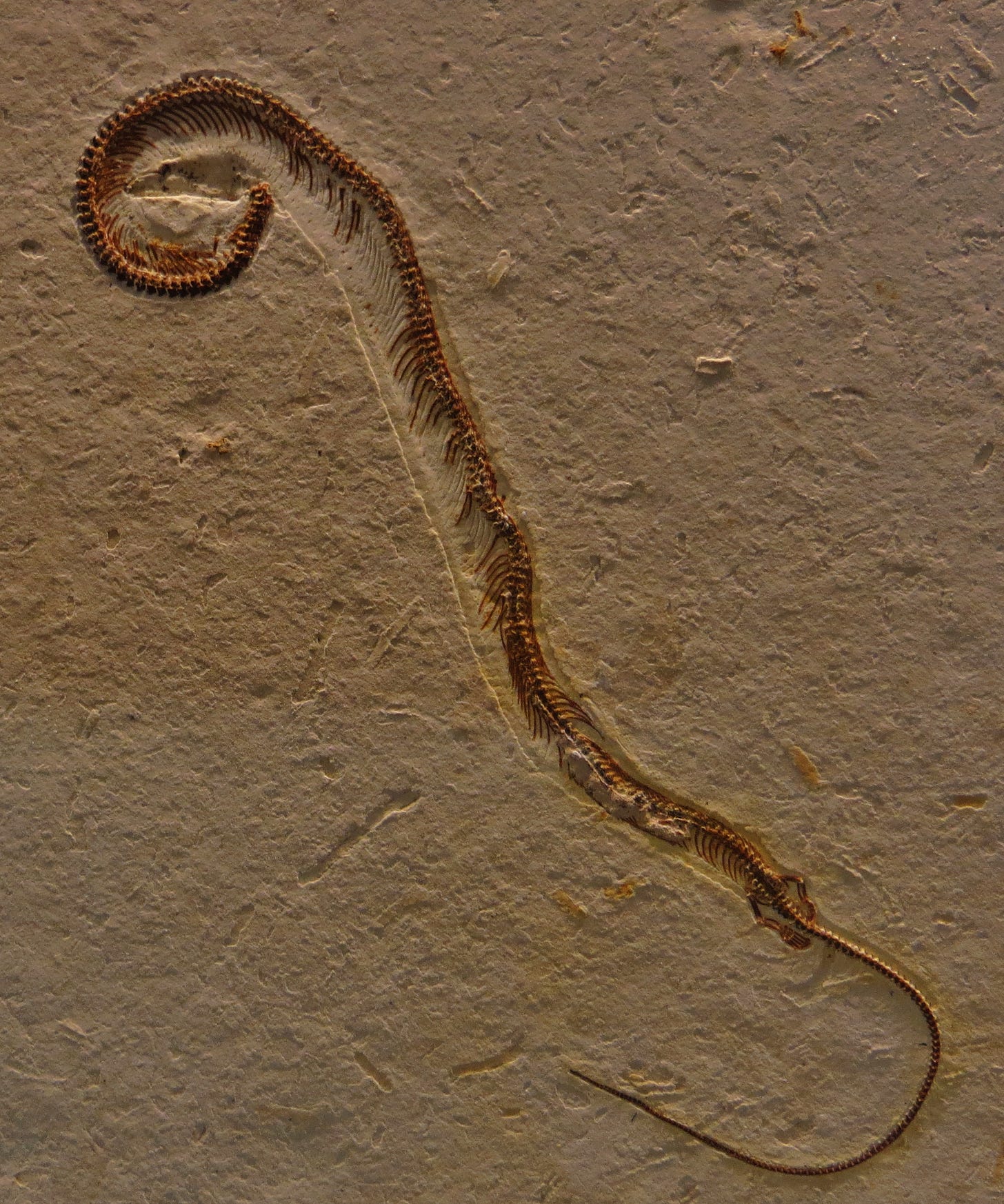Extreme Weekly #11
Chinese Dog Tigers, Citizenship Test Frauds, Human Rights For Mountains, Ancient Puke & More
February 5th 2025
Hello people! I wanna say a couple things. Welcome to all you new additions this week and thank you for subscribing, I hope you love what we are doing and enjoy the reads.
And, of course, thank you to you all for tuning in; I really appreciate you!
Let’s smash it
01. London Rubix Marathon
In a remarkable feat of endurance and dexterity, 22-year-old George Scholey from Hoxton, London, shattered the Guinness World Record for the most Rubik's Cubes solved while running a marathon. Participating in the London Marathon, Scholey solved approximately 520 Rubik's Cubes, surpassing the previous record of 420.
To manage this impressive task, Scholey had 600 scrambled Rubik's Cubes distributed in backpacks of 50 along the 26.2-mile route. Friends and family handed him these backpacks at designated checkpoints every two miles. He completed the marathon in four hours and 25 minutes, capturing footage of each solve with a GoPro for Guinness World Records verification. Notably, this achievement coincided with the 50th anniversary of the Rubik's Cube, making the accomplishment even more special.
02. Four Legged Snakes
In 2015, paleontologists unveiled Tetrapodophis amplectus, a 120-million-year-old fossil from Brazil, hailed as the first known four-legged snake. This tiny creature, about the size of a pencil, featured a long, slender body with four small limbs, each possessing five digits. Its discovery was initially celebrated as a significant link between lizards and snakes, suggesting a burrowing lifestyle for early serpents.
However, subsequent research cast doubt on this classification. In 2021, a study led by paleontologist Michael Caldwell re-examined the fossil and concluded that Tetrapodophis was not a snake but rather a member of the Dolichosauridae family—extinct marine lizards from the Cretaceous period. This reassessment highlighted the complexities and ongoing debates in understanding snake evolution.
The initial excitement and subsequent controversy surrounding Tetrapodophis underscore the dynamic nature of paleontological research, where new discoveries continually refine our understanding of life's history on Earth.
03. Citizenship Spy
In a plot reminiscent of a spy thriller, a 61-year-old woman from Enfield, north London, was arrested for allegedly using an array of wigs and disguises to impersonate at least 14 individuals taking the "Life in the UK" citizenship test. Between June 2022 and August 2023, she reportedly visited multiple test centers across the UK, donning various disguises and falsifying identification documents to evade detection.
Her actions aimed to help applicants fraudulently obtain the right to remain in the UK. During her arrest, authorities seized several false documents and numerous wigs believed to have been used in the scheme. Inspector Phillip Parr from Immigration Enforcement described the operation as a "pre-meditated plan to avoid detection," suggesting that financial gain was the primary motive. The Home Office emphasized that such fraudulent activities undermine the integrity of the immigration process.
04. Mr Mt. Taranaki
In a landmark decision, New Zealand's Parliament has granted legal personhood to Mount Taranaki, recognizing it as a living entity with the same rights and responsibilities as a human being. This move acknowledges the mountain's profound significance to the indigenous Māori tribes of the Taranaki region, who regard it as a revered ancestor. The legislation establishes Taranaki Maunga as a legal personality named Te Kāhui Tupua, encompassing the mountain and its surrounding peaks and lands.
Mount Taranaki joins other natural features in New Zealand, such as the Whanganui River and Te Urewera Forest, in being granted legal personhood, reflecting a growing movement to honor and protect the intrinsic value of the natural world.
05. Mystery of the Toxic Beach Balls
Nine of Sydney's iconic beaches, including Manly and Dee Why, were temporarily closed after marble-sized, white-grey balls washed ashore. Initial analyses by the Northern Beaches Council revealed that these mysterious spheres contained hydrocarbons, saturated fatty acids, and faecal bacteria, including E. coli. Authorities advised the public to avoid handling the debris and to report any further sightings to lifeguards.
This incident followed a similar event in October 2024, when approximately 2,000 black balls appeared on Sydney's beaches. Initially thought to be tar balls from oil spills, further testing indicated they were composed of fatty acids and chemicals commonly found in cleaning and cosmetic products, mixed with some fuel oil.
The New South Wales Environment Protection Authority (EPA) is conducting ongoing investigations to determine the exact source of the contamination. In the meantime, beachgoers are urged to stay informed about beach closures and to exercise caution when encountering unfamiliar debris along the shoreline.
06. Man Who Lived on Cruise Ships for 25 Years Develops Strange Health Condition
Mario Salcedo, 64, has spent over two decades living almost exclusively aboard cruise ships, completing more than 1,000 voyages. But this extreme lifestyle has caused an unusual condition—Mal de Débarquement Syndrome (MdDS) A disorder that makes him feel like he’s still swaying even on solid ground.
Despite struggling to walk straight on land, Salcedo says he has no regrets. Spending over $100,000 a year on cruises, he insists that life at sea is far more comfortable than returning to dry land!
Quizzz
Q1: What animal can hold its breath for the longest time?
Q2: Which planet rains molten glass sideways due to extreme winds?
Q3: What’s the only letter that doesn’t appear in any U.S. state name?
Q4: True or False: There’s a lake in Africa that can literally explode?
07. Zoo Busted for Painting Dogs to Look Like Tigers
A zoo in China is facing backlash after visitors discovered that its so-called "tigers" were actually dogs dyed with black and orange stripes. Outraged guests accused the zoo of deception, calling it a "ridiculous gimmick" and a cruel marketing stunt.
The controversy has sparked debates about animal welfare, with experts warning that dyeing animals can cause stress and potential health issues. While some defended it as harmless fun, most visitors weren’t amused—especially those who paid to see real tigers!
Definitely out of order. Look at the picture!! what was they thinking
08. Prehistoric Puke, 66-Million-Year-Old Fossilized Vomit Found in Denmark
A fossil hunter in Denmark has made a bizarre discovery—a 66-million-year-old chunk of fossilized fish vomit. Known as a "vomitolite," the rare find contains remnants of partially digested prey, offering scientists a glimpse into the diets of ancient marine predators. Researchers believe the regurgitation likely came from a prehistoric shark, as these creatures often spit out indigestible parts of their meals.
While fossilized feces (coprolites) are commonly studied, vomitolites are far rarer, making this an exciting find for paleontologists. The discovery could provide insights into ancient food chains and how marine ecosystems functioned before the asteroid impact that wiped out the dinosaurs.
Fire Facts
There’s a species of jellyfish that is biologically immortal, it never dies unless eaten!
The Eiffel Tower can grow taller by up to 6 inches in summer due to heat expansion.
Some turtles can breathe through their butts.
Sharks have been around longer than trees, by 200 million years!
thanks everyone
Quiz Answers
1️⃣ Cuvier’s Beaked Whale Can hold its breath for over 3 hours!
2️⃣ HD 189733b The scariest planet ever!
3️⃣The letter “Q” No U.S. state has it!
4️⃣ True! Lake Nyos in Africa can erupt with deadly carbon dioxide!
Lol






